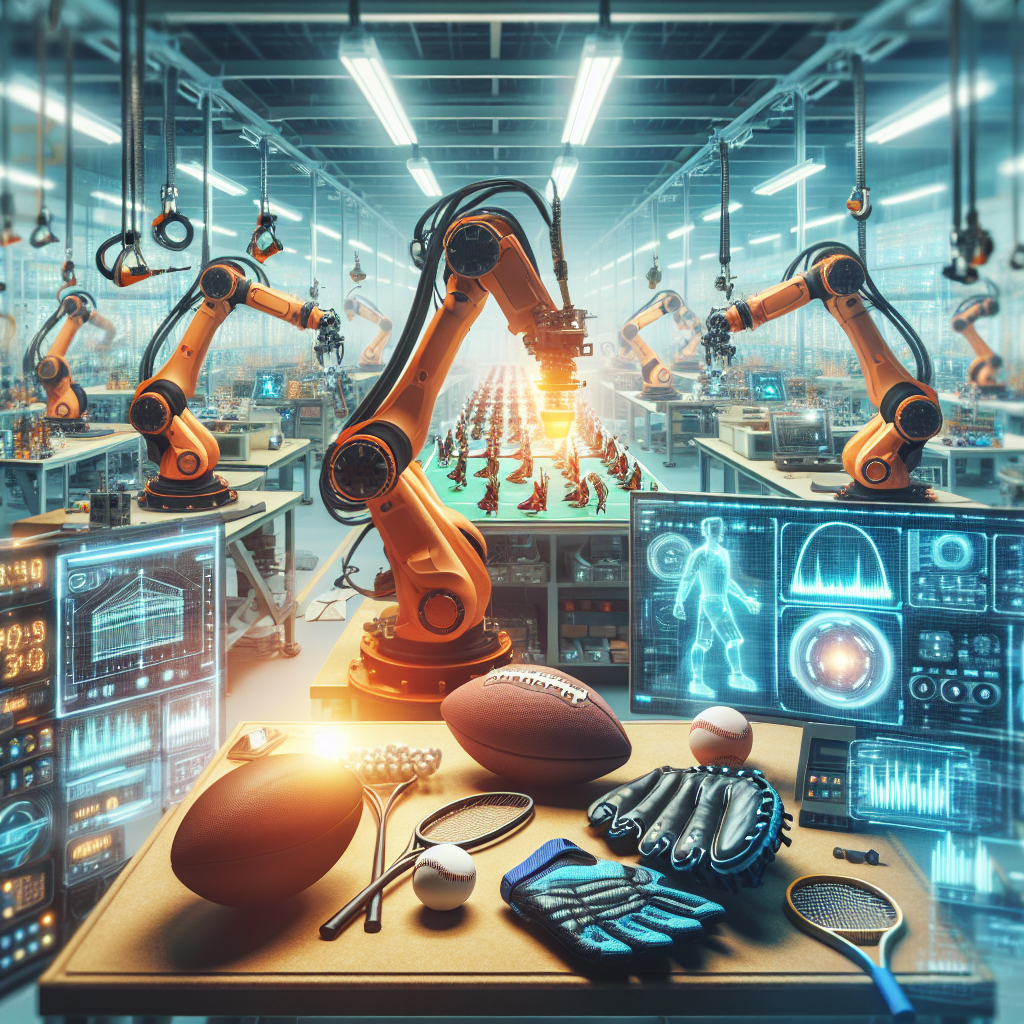Artificial Intelligence (AI) is revolutionizing the way sports equipment is manufactured. With the use of advanced algorithms, machine learning, and data analytics, manufacturers are able to optimize their production processes, improve product quality, and enhance overall efficiency. From designing to testing to production, AI is playing a crucial role in every step of the manufacturing process, leading to the development of high-performance sports equipment that is tailored to the needs of athletes.
One of the key areas where AI is making a significant impact is in the design phase. By analyzing vast amounts of data on athlete performance, body mechanics, and material properties, AI algorithms can generate optimized designs that are not only lightweight and durable but also enhance performance and reduce the risk of injury. For example, in the development of sports shoes, AI can analyze the pressure points on the feet of athletes and design a shoe that provides the right amount of support and cushioning in those areas.
AI is also being used to simulate and test different design variations, allowing manufacturers to quickly iterate and refine their products without the need for costly physical prototypes. This not only speeds up the design process but also results in better-performing products that are tailored to the specific needs of athletes.
In the production phase, AI is helping manufacturers optimize their manufacturing processes to reduce waste, improve efficiency, and ensure consistent quality. By analyzing data from sensors and cameras installed on production lines, AI algorithms can identify potential issues in real-time and make adjustments to prevent defects and minimize downtime. This level of automation and predictive maintenance not only improves the overall quality of the products but also reduces manufacturing costs and lead times.
Furthermore, AI is also being used to optimize the supply chain management of sports equipment manufacturers. By analyzing historical sales data, market trends, and customer preferences, AI algorithms can predict demand and optimize inventory levels, ensuring that manufacturers have the right amount of raw materials and finished products at the right time. This not only reduces inventory costs but also improves customer satisfaction by ensuring timely delivery of products.
Overall, the integration of AI into the manufacturing process of sports equipment is revolutionizing the industry, leading to the development of high-performance products that are tailored to the needs of athletes. With the ability to analyze vast amounts of data, simulate and test different design variations, and optimize production processes, AI is enabling manufacturers to push the boundaries of innovation and deliver products that enhance performance and improve the overall experience of athletes.
FAQs:
1. How is AI used in the design of sports equipment?
AI is used in the design of sports equipment by analyzing vast amounts of data on athlete performance, body mechanics, and material properties to generate optimized designs that enhance performance and reduce the risk of injury. AI algorithms can simulate and test different design variations, allowing manufacturers to quickly iterate and refine their products without the need for costly physical prototypes.
2. How does AI optimize manufacturing processes in the sports equipment industry?
AI optimizes manufacturing processes in the sports equipment industry by analyzing data from sensors and cameras installed on production lines to identify potential issues in real-time and make adjustments to prevent defects and minimize downtime. AI algorithms can also optimize supply chain management by predicting demand and optimizing inventory levels, ensuring timely delivery of products.
3. What are the benefits of using AI in the manufacturing of sports equipment?
The benefits of using AI in the manufacturing of sports equipment include improved product quality, reduced manufacturing costs, faster time-to-market, and enhanced customer satisfaction. AI enables manufacturers to design high-performance products that are tailored to the needs of athletes, optimize production processes to reduce waste and improve efficiency, and predict demand to optimize inventory levels.
4. How is AI revolutionizing the sports equipment industry?
AI is revolutionizing the sports equipment industry by enabling manufacturers to push the boundaries of innovation and deliver high-performance products that enhance athlete performance and improve the overall experience. By analyzing vast amounts of data, simulating and testing different design variations, and optimizing production processes, AI is transforming the way sports equipment is manufactured and leading to the development of products that are tailored to the needs of athletes.

